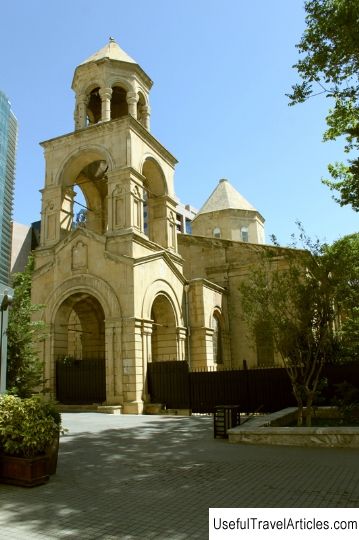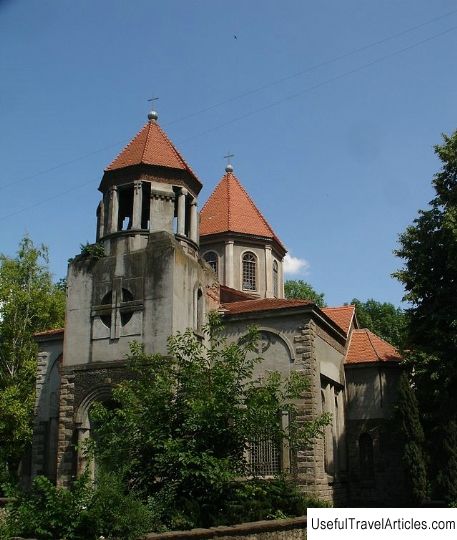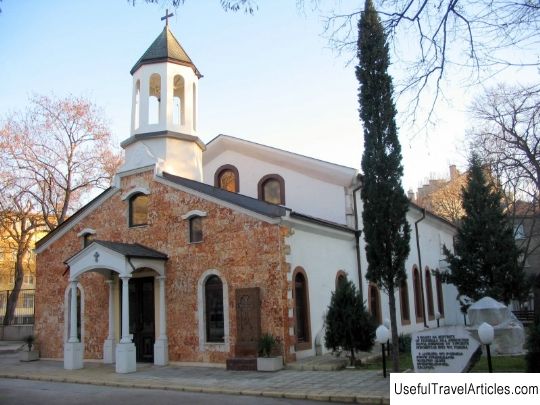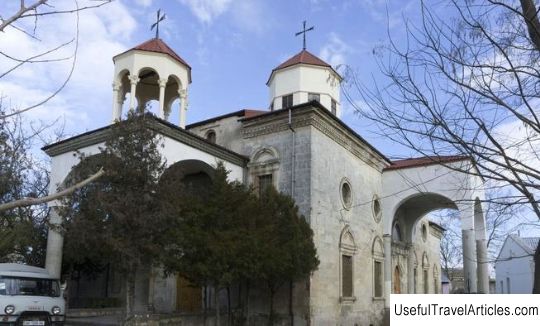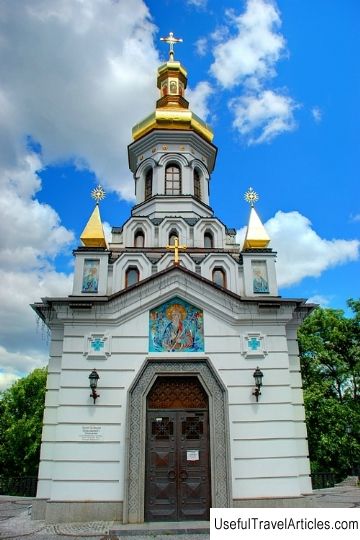Armenian church description and photo - Crimea: Yalta
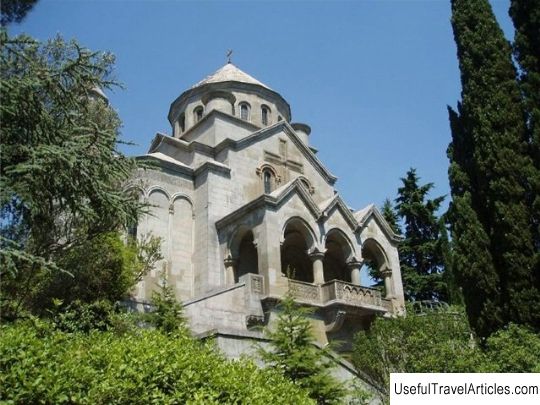
Armenian church description and photo - Crimea: Yalta. Detailed information about the attraction. Description, photos and a map showing the nearest significant objects. Photo and descriptionYalta Armenian Church began to be erected in 1909 and its construction was completed in 1914. The Armenian architect Gabriel Ter-Mikelian was commissioned in 1905 to design the church. The famous Armenian painter and theater artist Vardges Surenyants was involved in sketches for the construction and interior decoration of the building. The church was built at the expense of the Baku oil industrialist Poghos Ter-Ghukasyan. He was building a church in memory of his deceased daughter. His daughter died early and was buried in the family crypt, which was located at the base of the church. Later, two of his sons were buried in this tomb. According to the legend, one of the sons committed suicide on his own, having lost a fairly large amount of cards, and the other died under unknown circumstances. The Yalta Armenian Church was built in the traditions in which the early Christian churches were built, and resembles the oldest temple of Hripsime in Echmiadzin. The architect took this ancient temple as the basis for his project. An Armenian church was built in Yalta from the material of Foros volcanic tuff. The main southern facade of the building is decorated with a hundred steps leading to it, framed by pyramidal cypresses. The central staircase overlooks the stately dome topped with a cross. From here you can admire the beauty of the low arch of the southern entrance, a three-tiered loggia, which are decorated with details exquisitely carved into stone by the hands of craftsmen. The main entrance is located at the back of the church. The main entrance portal is crowned with a graceful belfry rotunda. In the northeastern part there are two arched windows, decorated with a relief image of a cross with a geometric ornament. The western side of the church ends with a rotunda-belfry of six columns. The open loggia is decorated with decorations made in the traditions of Armenian architecture of the 12-13th centuries. The basement is intended for the crypt. It is emphasized by a nominal niche, executed with grace, and a very beautiful apse of the tomb. The entrance to the niche is framed by an ornamented arch. A metal grate adorns the window of the tomb. On it there is an image of two black ravens that guard the eternal rest of the dead. The domed hall of the Armenian Church attracts with its original interior. Cruciform in plan, it is illuminated by the wall pylons of twelve arched windows. The dome of the church is decorated with fresco painting depicting white and blue flowers, located on a light greenish background. Flowers seem to be drawn to the sun. This ornament is enlivened by birds of paradise. The creator of this church, Vardges Surenyas, who died in 1921, received the last shelter here. In front of the southern facade of the church stands his gravestone, made of gray diorite.      We also recommend reading Isola Stromboli description and photos - Italy: Lipari (Aeolian) Islands Topic: Armenian church description and photo - Crimea: Yalta. |
